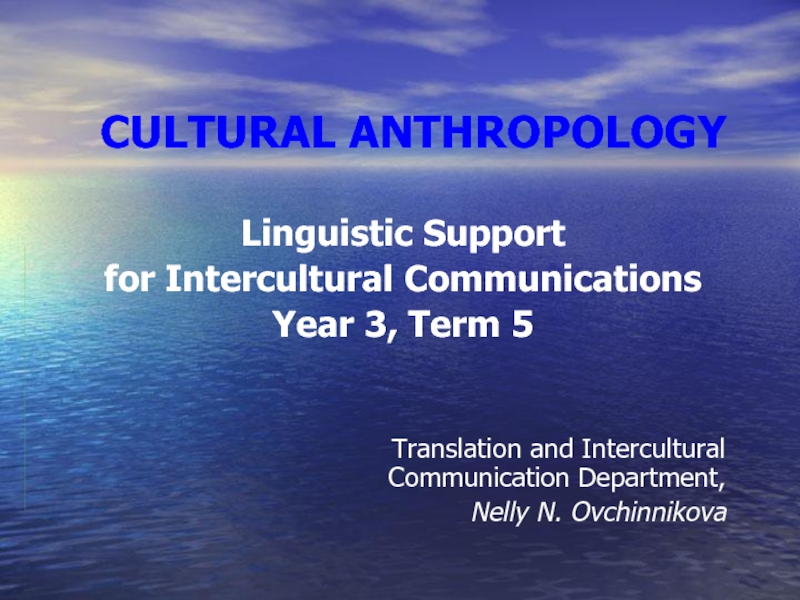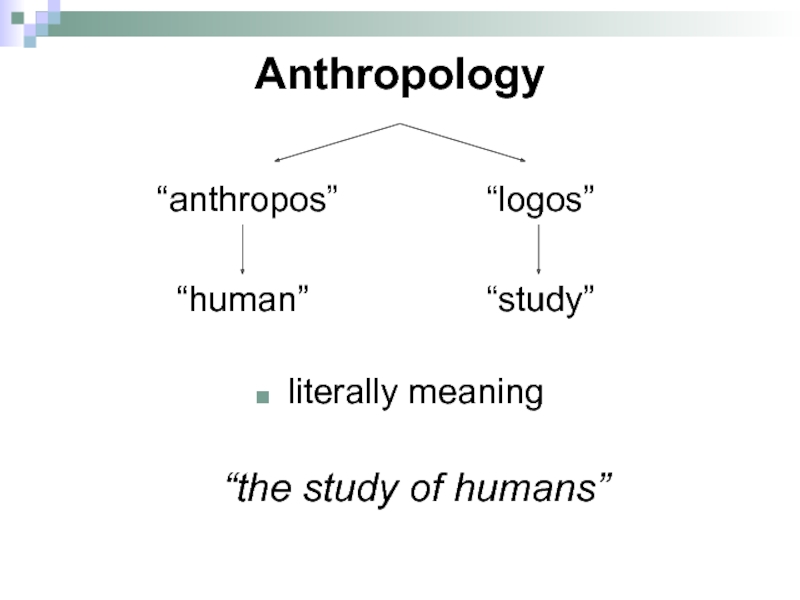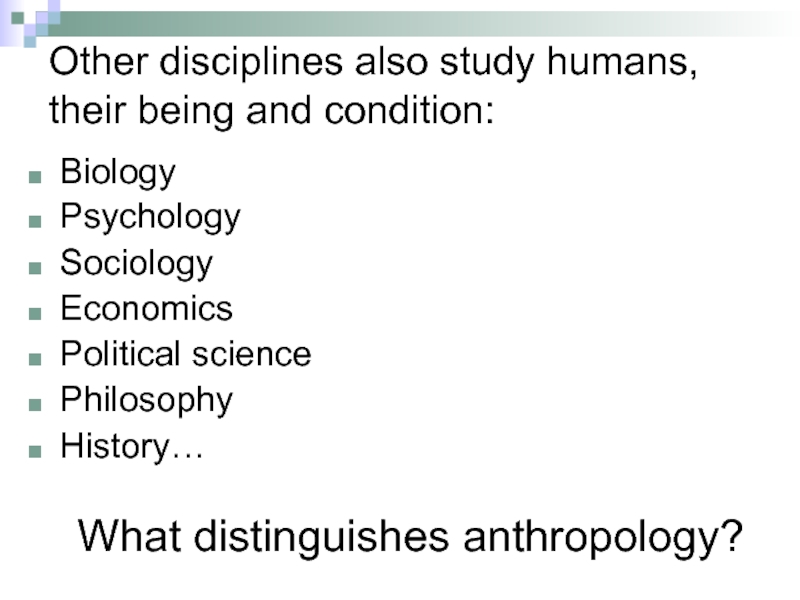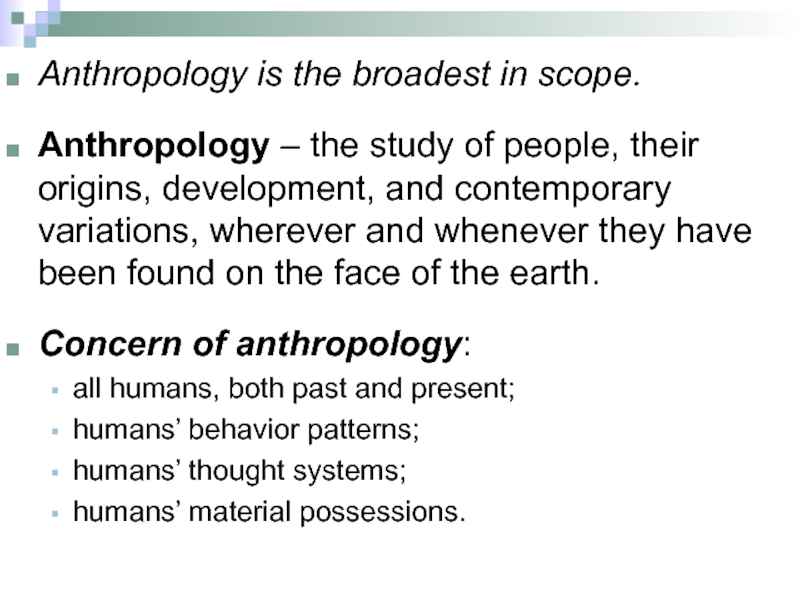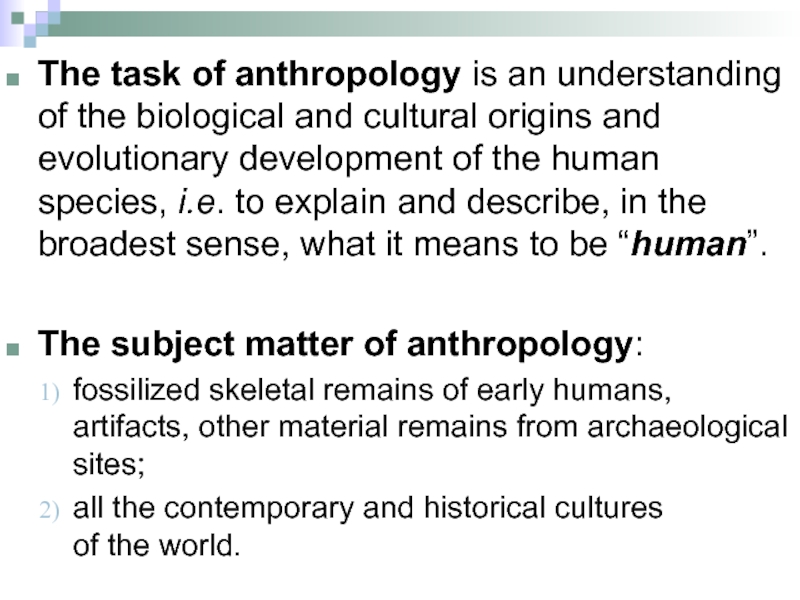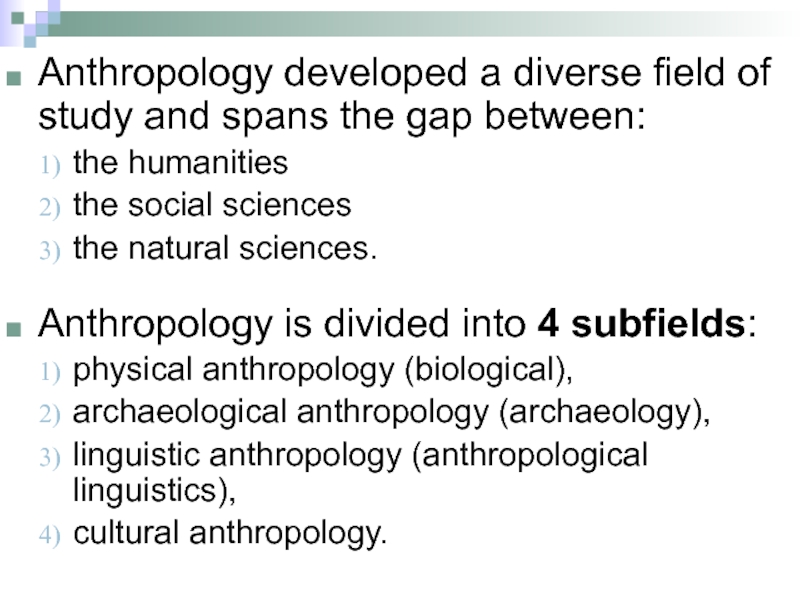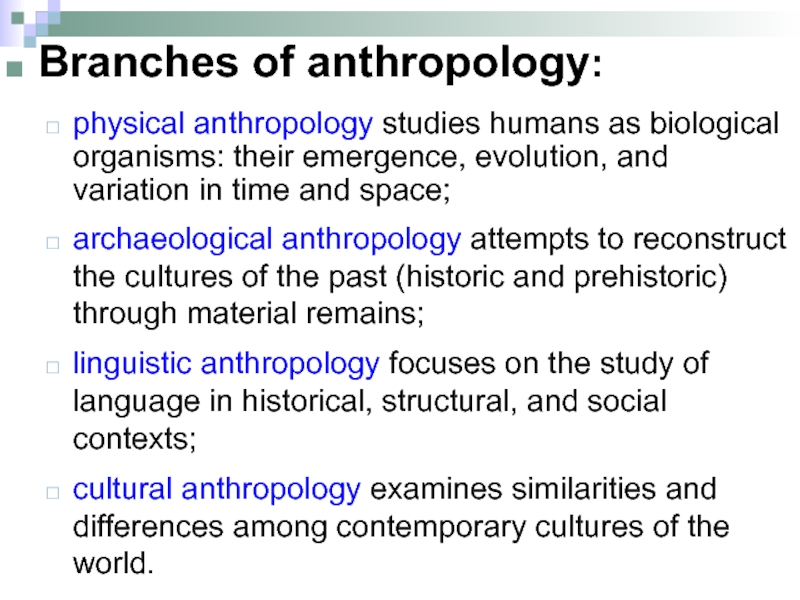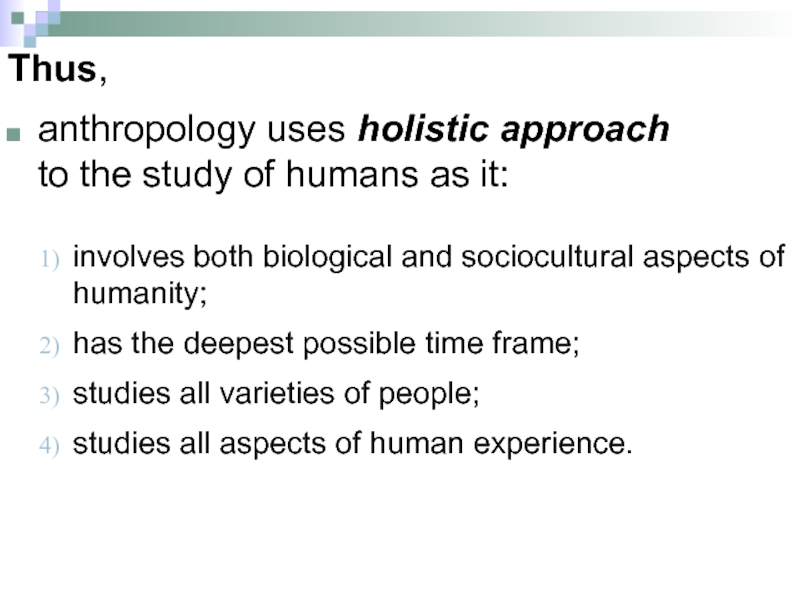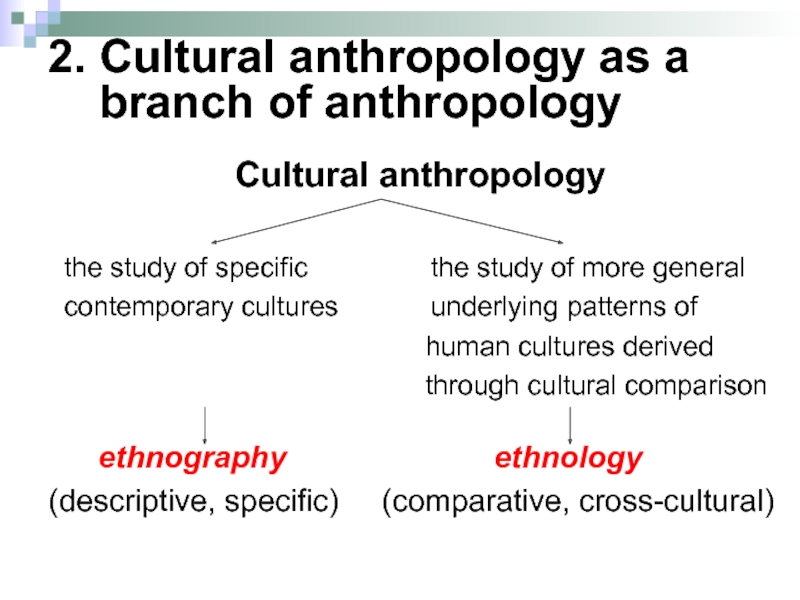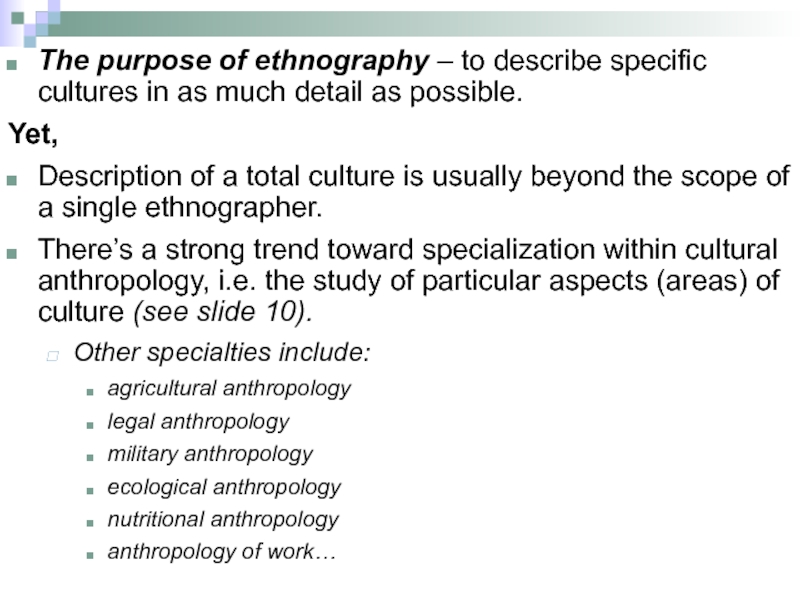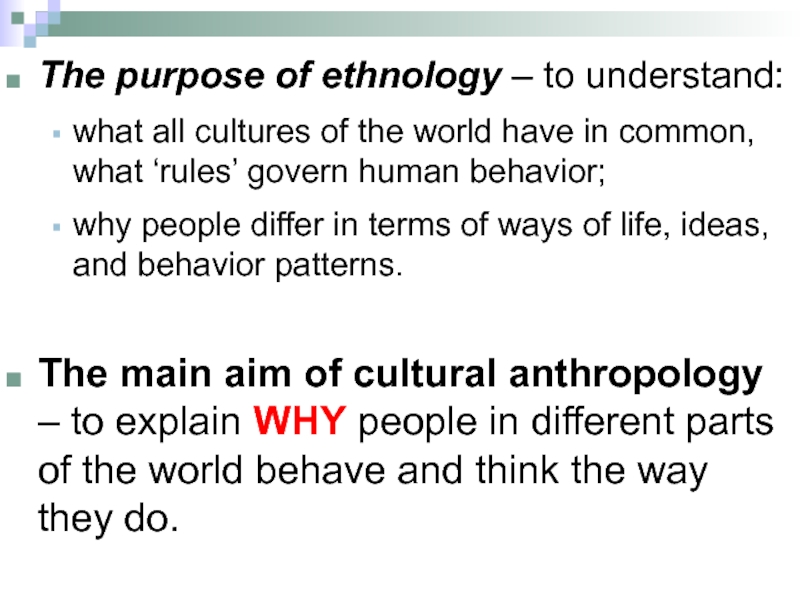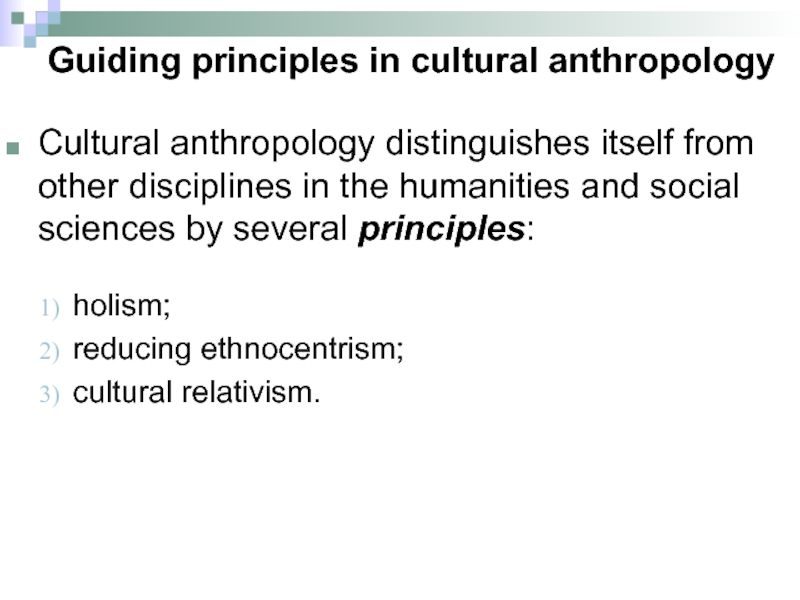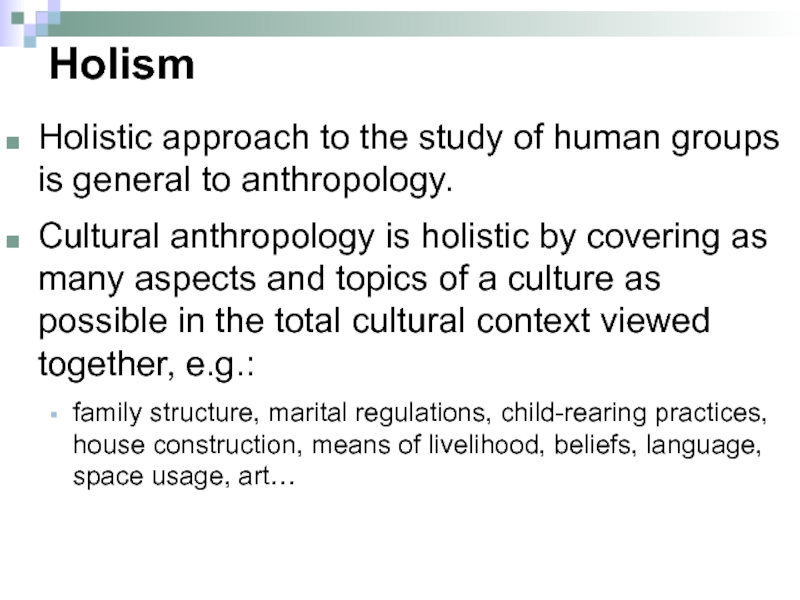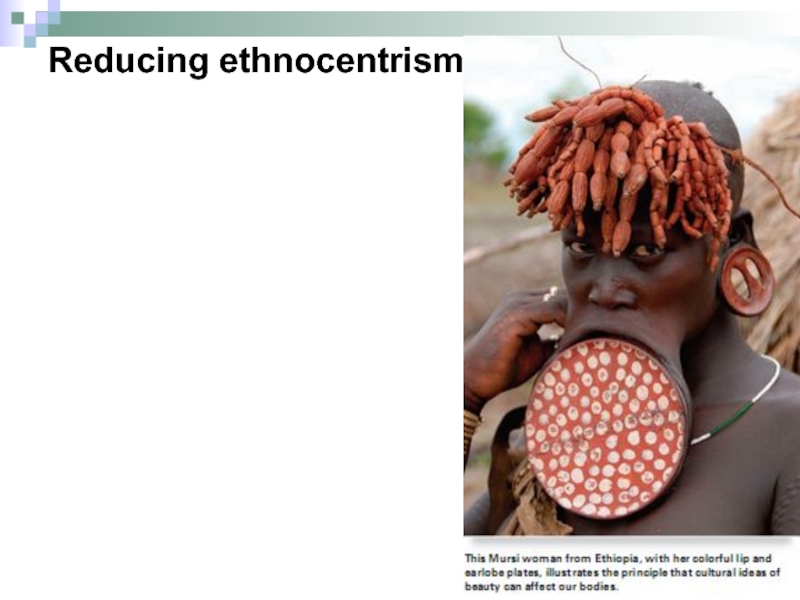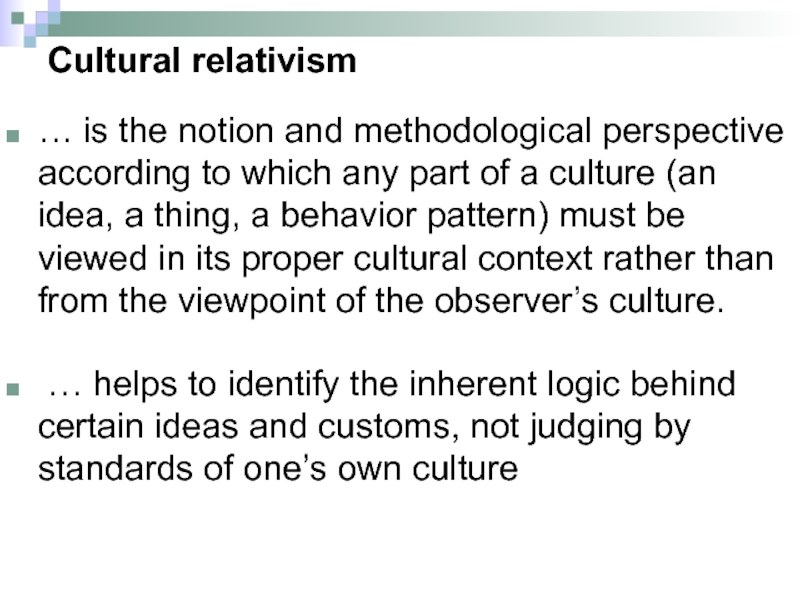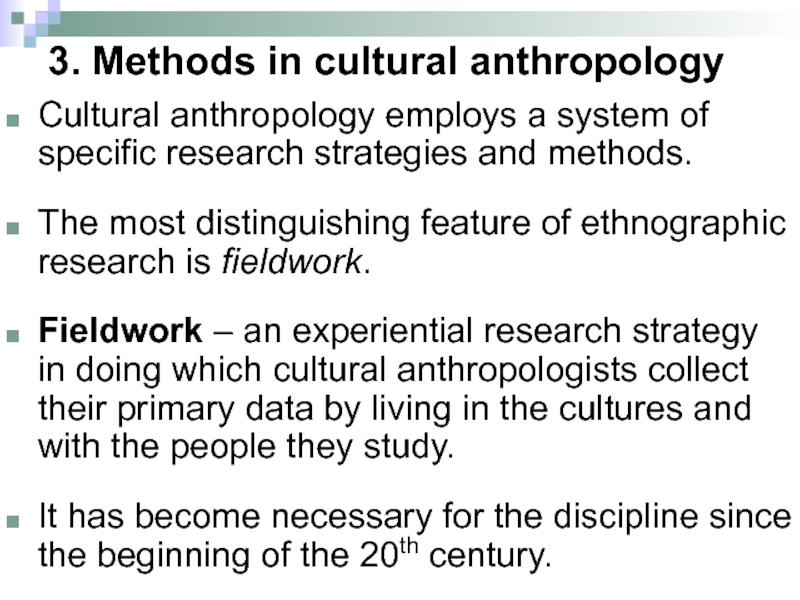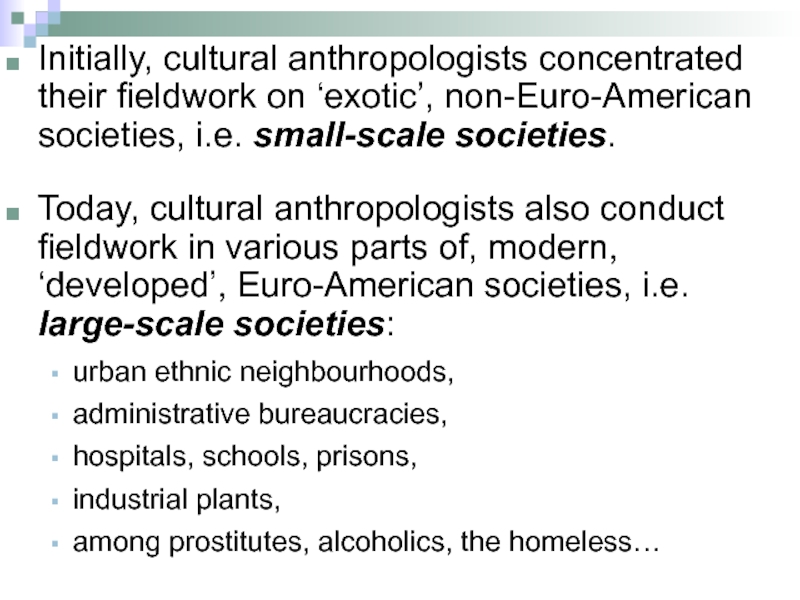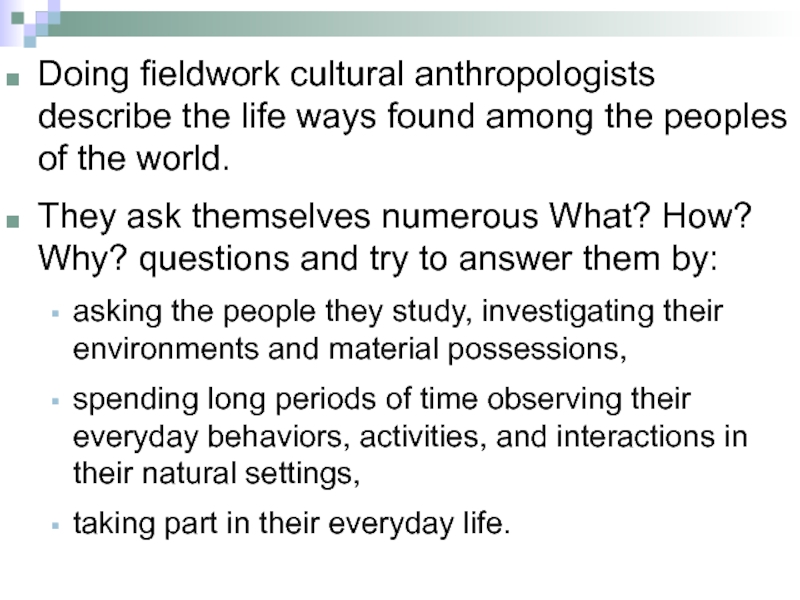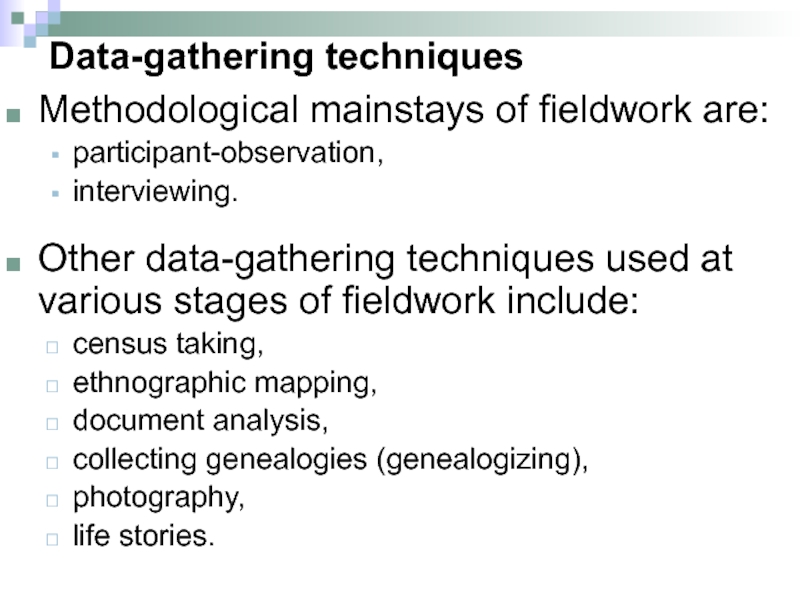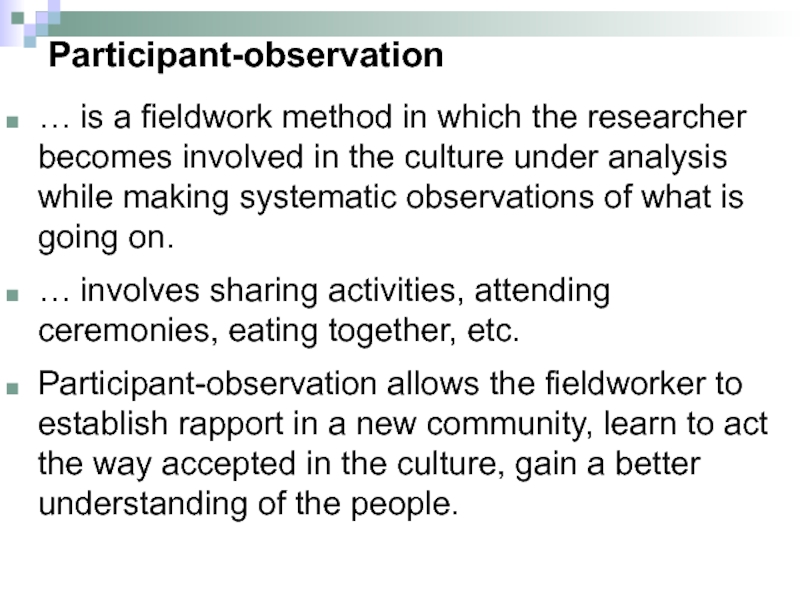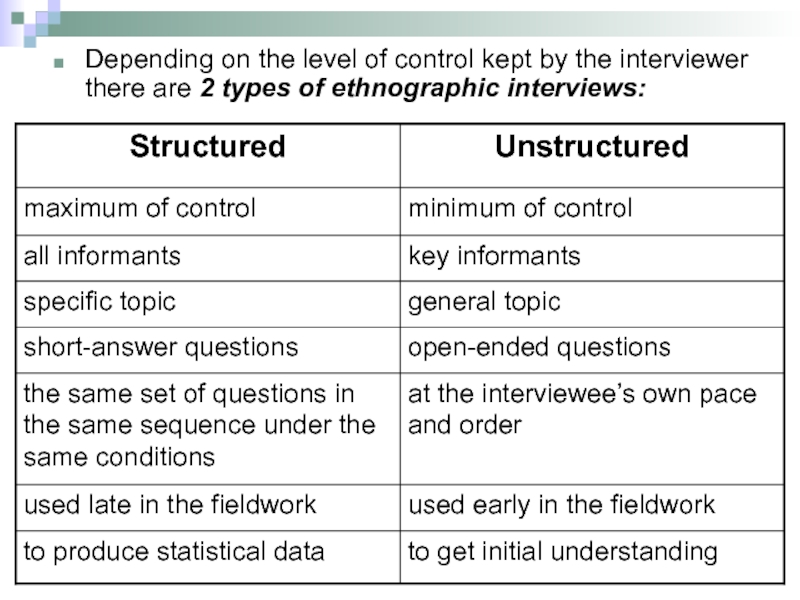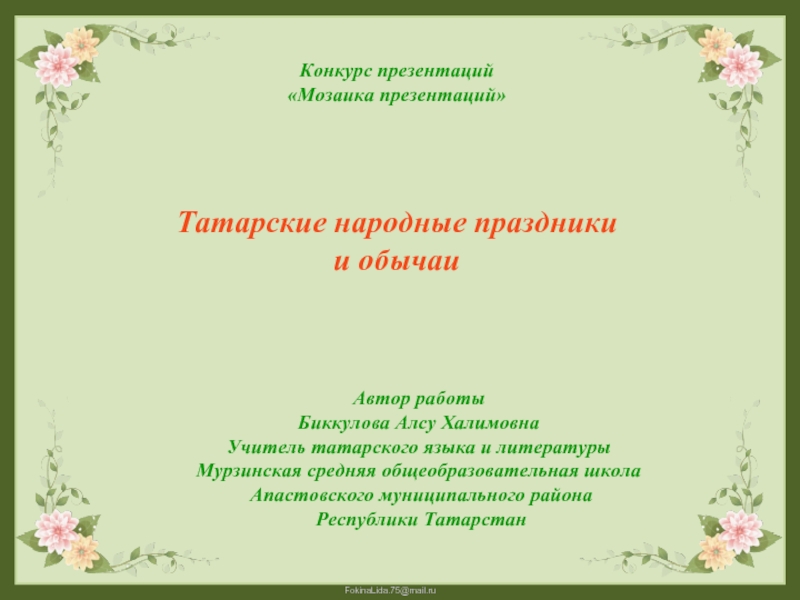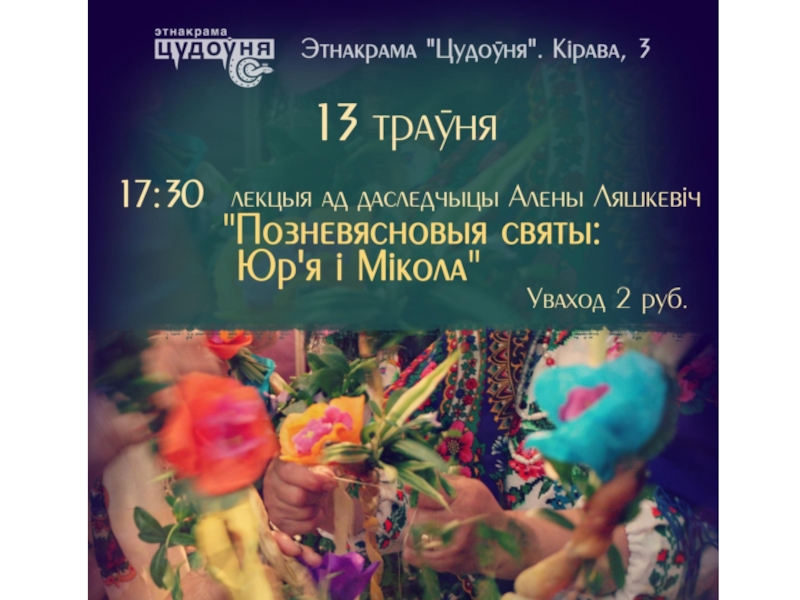Communication Department,
Nelly N. Ovchinnikova
- Главная
- Разное
- Дизайн
- Бизнес и предпринимательство
- Аналитика
- Образование
- Развлечения
- Красота и здоровье
- Финансы
- Государство
- Путешествия
- Спорт
- Недвижимость
- Армия
- Графика
- Культурология
- Еда и кулинария
- Лингвистика
- Английский язык
- Астрономия
- Алгебра
- Биология
- География
- Детские презентации
- Информатика
- История
- Литература
- Маркетинг
- Математика
- Медицина
- Менеджмент
- Музыка
- МХК
- Немецкий язык
- ОБЖ
- Обществознание
- Окружающий мир
- Педагогика
- Русский язык
- Технология
- Физика
- Философия
- Химия
- Шаблоны, картинки для презентаций
- Экология
- Экономика
- Юриспруденция
Cultural anthropology. Linguistic support for intercultural communications презентация
Содержание
- 1. Cultural anthropology. Linguistic support for intercultural communications
- 2. THEME 1 Cultural Anthropology as a Science
- 3. 1. Anthropology as a science
- 4. Anthropology
- 5. Other disciplines also study humans, their being
- 6. Anthropology is the broadest in scope.
- 7. The task of anthropology is an understanding
- 8. Anthropology developed a diverse field of study
- 9. Branches of anthropology: physical anthropology studies
- 10. Branches of anthropology:
- 11. Thus, anthropology uses holistic approach to
- 12. 2. Cultural anthropology as a
- 13. The purpose of ethnography – to describe
- 14. The purpose of ethnology – to understand:
- 15. Guiding principles in cultural anthropology Cultural anthropology
- 16. Holism Holistic approach to the study
- 17. Reducing ethnocentrism
- 18. Everyone is ethnocentric to some degree being
- 19. Cultural relativism … is the notion and
- 20. 3. Methods in cultural anthropology Cultural anthropology
- 21. Initially, cultural anthropologists concentrated their fieldwork on
- 22. Doing fieldwork cultural anthropologists describe the life
- 23. Data-gathering techniques Methodological mainstays of fieldwork are:
- 24. Participant-observation … is a fieldwork method in
- 25. Interviewing … is a fieldwork method used
- 26. Depending on the level of control kept
- 27. Other data-gathering techniques
Слайд 1CULTURAL ANTHROPOLOGY
Linguistic Support
for Intercultural Communications
Year 3, Term 5
Translation and Intercultural
Слайд 5Other disciplines also study humans, their being and condition:
Biology
Psychology
Sociology
Economics
Political science
Philosophy
History…
What distinguishes
anthropology?
Слайд 6Anthropology is the broadest in scope.
Anthropology – the study of people,
their origins, development, and contemporary variations, wherever and whenever they have been found on the face of the earth.
Concern of anthropology:
all humans, both past and present;
humans’ behavior patterns;
humans’ thought systems;
humans’ material possessions.
Concern of anthropology:
all humans, both past and present;
humans’ behavior patterns;
humans’ thought systems;
humans’ material possessions.
Слайд 7The task of anthropology is an understanding of the biological and
cultural origins and evolutionary development of the human species, i.e. to explain and describe, in the broadest sense, what it means to be “human”.
The subject matter of anthropology:
fossilized skeletal remains of early humans, artifacts, other material remains from archaeological sites;
all the contemporary and historical cultures of the world.
The subject matter of anthropology:
fossilized skeletal remains of early humans, artifacts, other material remains from archaeological sites;
all the contemporary and historical cultures of the world.
Слайд 8Anthropology developed a diverse field of study and spans the gap
between:
the humanities
the social sciences
the natural sciences.
Anthropology is divided into 4 subfields:
physical anthropology (biological),
archaeological anthropology (archaeology),
linguistic anthropology (anthropological linguistics),
cultural anthropology.
the humanities
the social sciences
the natural sciences.
Anthropology is divided into 4 subfields:
physical anthropology (biological),
archaeological anthropology (archaeology),
linguistic anthropology (anthropological linguistics),
cultural anthropology.
Слайд 9Branches of anthropology:
physical anthropology studies humans as biological organisms: their emergence,
evolution, and variation in time and space;
archaeological anthropology attempts to reconstruct the cultures of the past (historic and prehistoric) through material remains;
linguistic anthropology focuses on the study of language in historical, structural, and social contexts;
cultural anthropology examines similarities and differences among contemporary cultures of the world.
archaeological anthropology attempts to reconstruct the cultures of the past (historic and prehistoric) through material remains;
linguistic anthropology focuses on the study of language in historical, structural, and social contexts;
cultural anthropology examines similarities and differences among contemporary cultures of the world.
Слайд 11Thus,
anthropology uses holistic approach
to the study of humans as it:
involves
both biological and sociocultural aspects of humanity;
has the deepest possible time frame;
studies all varieties of people;
studies all aspects of human experience.
has the deepest possible time frame;
studies all varieties of people;
studies all aspects of human experience.
Слайд 122. Cultural anthropology as a
branch of anthropology
Cultural anthropology
the
study of specific the study of more general
contemporary cultures underlying patterns of
human cultures derived
through cultural comparison
ethnography ethnology
(descriptive, specific) (comparative, cross-cultural)
contemporary cultures underlying patterns of
human cultures derived
through cultural comparison
ethnography ethnology
(descriptive, specific) (comparative, cross-cultural)
Слайд 13The purpose of ethnography – to describe specific cultures in as
much detail as possible.
Yet,
Description of a total culture is usually beyond the scope of a single ethnographer.
There’s a strong trend toward specialization within cultural anthropology, i.e. the study of particular aspects (areas) of culture (see slide 10).
Other specialties include:
agricultural anthropology
legal anthropology
military anthropology
ecological anthropology
nutritional anthropology
anthropology of work…
Yet,
Description of a total culture is usually beyond the scope of a single ethnographer.
There’s a strong trend toward specialization within cultural anthropology, i.e. the study of particular aspects (areas) of culture (see slide 10).
Other specialties include:
agricultural anthropology
legal anthropology
military anthropology
ecological anthropology
nutritional anthropology
anthropology of work…
Слайд 14The purpose of ethnology – to understand:
what all cultures of the
world have in common, what ‘rules’ govern human behavior;
why people differ in terms of ways of life, ideas, and behavior patterns.
The main aim of cultural anthropology – to explain WHY people in different parts of the world behave and think the way they do.
why people differ in terms of ways of life, ideas, and behavior patterns.
The main aim of cultural anthropology – to explain WHY people in different parts of the world behave and think the way they do.
Слайд 15Guiding principles in cultural anthropology
Cultural anthropology distinguishes itself from other disciplines
in the humanities and social sciences by several principles:
holism;
reducing ethnocentrism;
cultural relativism.
holism;
reducing ethnocentrism;
cultural relativism.
Слайд 16Holism
Holistic approach to the study of human groups is general
to anthropology.
Cultural anthropology is holistic by covering as many aspects and topics of a culture as possible in the total cultural context viewed together, e.g.:
family structure, marital regulations, child-rearing practices, house construction, means of livelihood, beliefs, language, space usage, art…
Cultural anthropology is holistic by covering as many aspects and topics of a culture as possible in the total cultural context viewed together, e.g.:
family structure, marital regulations, child-rearing practices, house construction, means of livelihood, beliefs, language, space usage, art…
Слайд 18Everyone is ethnocentric to some degree being brought up in a
single culture.
Ethnocentrism is inevitable, unconscious, and difficult to control.
Becoming aware of one’s own ethnocentrism helps to set aside one’s own value judgments and learn how other cultures operate.
The main rule of cultural anthropology:
“There are no better cultures,
or worse cultures,
there are different cultures.”
Ethnocentrism is inevitable, unconscious, and difficult to control.
Becoming aware of one’s own ethnocentrism helps to set aside one’s own value judgments and learn how other cultures operate.
The main rule of cultural anthropology:
“There are no better cultures,
or worse cultures,
there are different cultures.”
Слайд 19Cultural relativism
… is the notion and methodological perspective according to which
any part of a culture (an idea, a thing, a behavior pattern) must be viewed in its proper cultural context rather than from the viewpoint of the observer’s culture.
… helps to identify the inherent logic behind certain ideas and customs, not judging by standards of one’s own culture
… helps to identify the inherent logic behind certain ideas and customs, not judging by standards of one’s own culture
Слайд 203. Methods in cultural anthropology
Cultural anthropology employs a system of specific
research strategies and methods.
The most distinguishing feature of ethnographic research is fieldwork.
Fieldwork – an experiential research strategy in doing which cultural anthropologists collect their primary data by living in the cultures and with the people they study.
It has become necessary for the discipline since the beginning of the 20th century.
The most distinguishing feature of ethnographic research is fieldwork.
Fieldwork – an experiential research strategy in doing which cultural anthropologists collect their primary data by living in the cultures and with the people they study.
It has become necessary for the discipline since the beginning of the 20th century.
Слайд 21Initially, cultural anthropologists concentrated their fieldwork on ‘exotic’, non-Euro-American societies, i.e.
small-scale societies.
Today, cultural anthropologists also conduct fieldwork in various parts of, modern, ‘developed’, Euro-American societies, i.e. large-scale societies:
urban ethnic neighbourhoods,
administrative bureaucracies,
hospitals, schools, prisons,
industrial plants,
among prostitutes, alcoholics, the homeless…
Today, cultural anthropologists also conduct fieldwork in various parts of, modern, ‘developed’, Euro-American societies, i.e. large-scale societies:
urban ethnic neighbourhoods,
administrative bureaucracies,
hospitals, schools, prisons,
industrial plants,
among prostitutes, alcoholics, the homeless…
Слайд 22Doing fieldwork cultural anthropologists describe the life ways found among the
peoples of the world.
They ask themselves numerous What? How? Why? questions and try to answer them by:
asking the people they study, investigating their environments and material possessions,
spending long periods of time observing their everyday behaviors, activities, and interactions in their natural settings,
taking part in their everyday life.
They ask themselves numerous What? How? Why? questions and try to answer them by:
asking the people they study, investigating their environments and material possessions,
spending long periods of time observing their everyday behaviors, activities, and interactions in their natural settings,
taking part in their everyday life.
Слайд 23Data-gathering techniques
Methodological mainstays of fieldwork are:
participant-observation,
interviewing.
Other data-gathering techniques used at various
stages of fieldwork include:
census taking,
ethnographic mapping,
document analysis,
collecting genealogies (genealogizing),
photography,
life stories.
census taking,
ethnographic mapping,
document analysis,
collecting genealogies (genealogizing),
photography,
life stories.
Слайд 24Participant-observation
… is a fieldwork method in which the researcher becomes involved
in the culture under analysis while making systematic observations of what is going on.
… involves sharing activities, attending ceremonies, eating together, etc.
Participant-observation allows the fieldworker to establish rapport in a new community, learn to act the way accepted in the culture, gain a better understanding of the people.
… involves sharing activities, attending ceremonies, eating together, etc.
Participant-observation allows the fieldworker to establish rapport in a new community, learn to act the way accepted in the culture, gain a better understanding of the people.
Слайд 25Interviewing
… is a fieldwork method used for obtaining information from the
local people.
Types of ethnographic information:
attitudinal data – information on what people think and feel about things, ideas, events;
behavioural data – information on what people do, and why.
Types of ethnographic information:
attitudinal data – information on what people think and feel about things, ideas, events;
behavioural data – information on what people do, and why.
Слайд 26Depending on the level of control kept by the interviewer there
are 2 types of ethnographic interviews:
